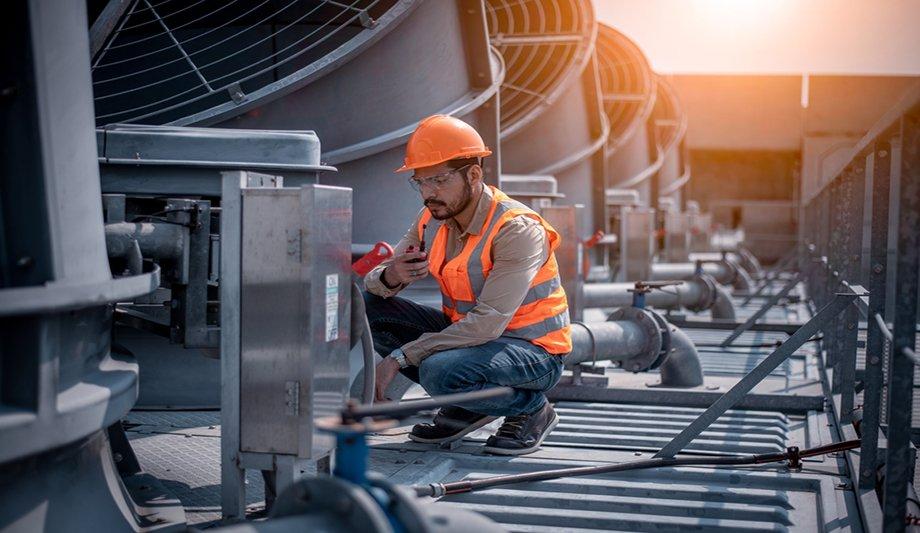Nothing is immune to entropy. As buildings age, they suffer natural breakdowns in efficiency, performance, and useability, compromising occupant comfort and leading to higher energy bills. Luckily, they do not have to stay that way. Retro-commissioning brings existing structures up to speed so they can function their best.
What Is Commissioning?
Commissioning helps buildings operate as the owners intended and ensures staff maintains their equipment and systems. During new construction, commissioning teams may conduct a quality assurance process on a structure to ensure it will perform properly.
For example, making HVAC equipment more energy-efficient often requires advanced control strategies. It is ideal to implement these controls early in the construction process.
Recommissioning
Recommissioning occurs when a facility experiences a more commissioning process
Recommissioning occurs when a building undergoes an additional commissioning process. A change in ownership or building use may trigger the decision to recommission a structure. Operational problems or poor energy performance can also lead owners to recommission their properties.
Since the building has already been commissioned in the past, the commissioning team may have initially included a plan for future renovations. Following it simplifies the recommissioning process.
Retro-Commissioning
An existing building that has never been commissioned may be retro-commissioned to modernize it, improve occupant comfort and boost energy efficiency. It is common to retro-commission during a planned renovation or upgrade to the structure.
Retro-commissioning ensures a building’s new features meet the owner’s and occupants’ needs, as well as government regulations. It can resolve problems that occurred during the design and construction phase and address new issues that arose as the structure aged.
The Importance of Retro-Commissioning
One of the most obvious benefits of retro-commissioning a building is the cost savings
One of the most obvious benefits of retro-commissioning a building is the cost savings. According to the Environmental Protection Agency (EPA), the average retro-commissioning project leads to a 15% reduction in energy consumption and saves building owners 27 cents per square foot. Many utility companies also offer performance-based incentives to owners based on how many kilowatt-hours their retro-commissioning project saves.
Additionally, retro-commissioning can reduce maintenance costs in the long run and extend equipment life. Improving a building’s heating, cooling, and humidity control can increase tenant comfort and retention.
Building sector
Retro-commissioning often boosts air quality by ensuring adequate air intake, improving HVAC filtration and reducing moisture. It may even increase a structure’s property value.
The building sector—including construction, heating, lighting, and cooling for companies and homes—accounts for over 33% of worldwide energy consumption and emissions. Retro-commissioning makes structures more sustainable and helps companies comply with environmental laws, an increasingly important factor in modern business operations.
Which Parts of a Building Can Be Retro-Commissioned?
Retro-commissioning addresses many complex systems within a building, including:
- HVAC: A commissioning authority or facilities team can retro-commission a structure’s HVAC system, including inspecting air economizers and demand-controlled ventilation for proper function. They can also check for blocked air registers, broken exhaust fans and whether the HVAC equipment complies with building occupancy codes. This process may reveal broken machinery or inefficiencies that waste energy, reduce occupant comfort and harm indoor air quality.
- Lighting and Lighting Controls: Old lightbulbs are often inefficient and require more frequent maintenance than newer types like LEDs. Retro-commissioning teams can look at a building’s lighting to determine if the building would benefit from different kinds of lights. Additionally, they can install smart lighting systems to automatically regulate energy use based on times of day or occupancy levels.
- Humidity Control Systems: A building’s humidity level plays a strong role in occupant comfort, mold growth, and heating and cooling efficiency. Retro-commissioning an HVAC system’s dehumidifier and humidity sensors ensures the building stays dry, avoiding problems down the road.
- Sprinkler Systems: A working sprinkler system is crucial to a building’s fire safety installations. Retro-commissioning teams can look for broken sprinkler heads, leaking pipes and bad wiring connections that could pose a safety issue during an emergency.
Steps of Retro-Commissioning
Here is a breakdown of the retro-commissioning process:
- Planning: In the planning phase, the commissioning team prescreens a building for energy use, HVAC problems and tenant comfort complaints. It then develops a plan for retro-commissioning the building.
- Closer investigation: The commissioning team performs diagnostic testing and monitoring to closely examine a building’s energy performance. It documents findings and reviews the results.
- Implementation: The commissioning team performs necessary repairs and improvements to the building based on testing.
- Confirmation: The team drafts a final report to confirm what was done in the building. It may give the owners a copy of the retro-commissioning plan.
- Training: As a last step, training building occupants to use new controls or equipment the commissioning team installed is often necessary.
Revitalizing Existing Structures
Although it is common to commission buildings when they are first built, it is also possible to retro-commission structures that need an upgrade. Retro-commissioning helps owners meet performance and energy efficiency targets. It improves occupant comfort, reduces the need for expensive equipment repairs and can significantly lower energy bills.
As properties age and more companies seek to become sustainable, it is more important than ever to breathe new life—and fresher air—into existing buildings. Retro-commissioning is the easiest way to accomplish that.



















